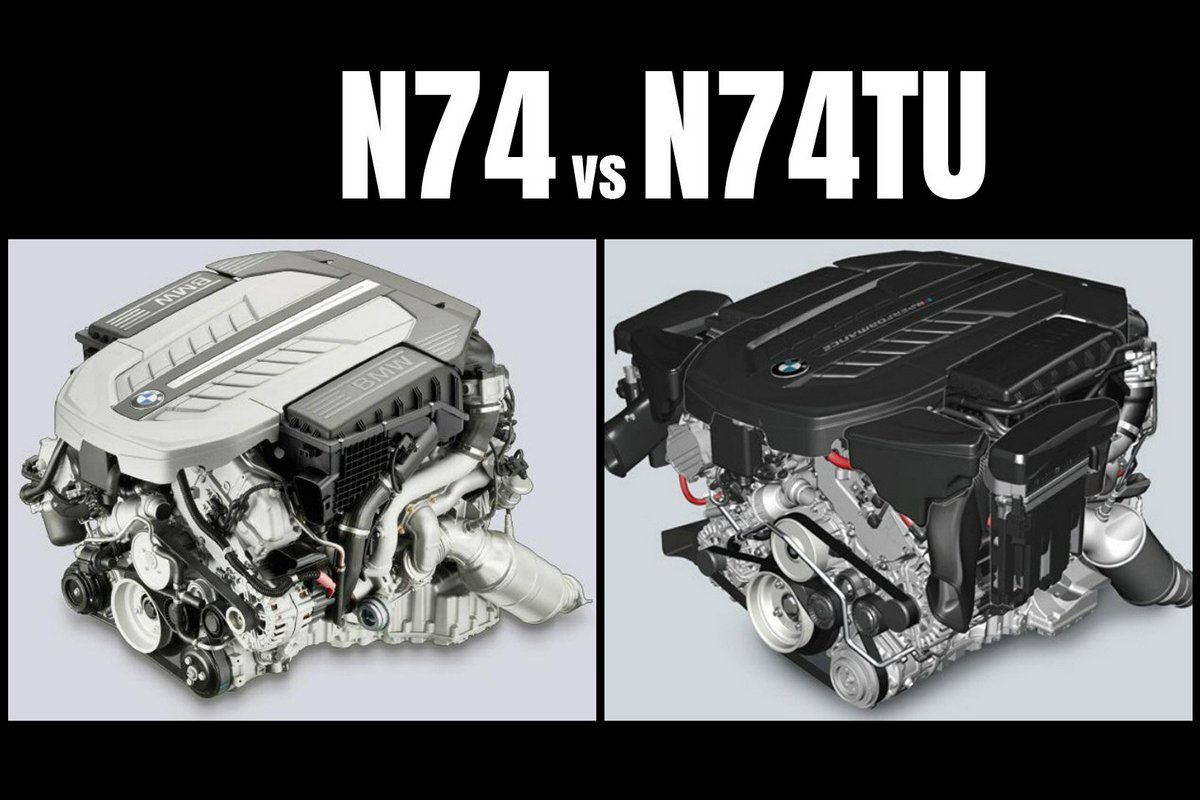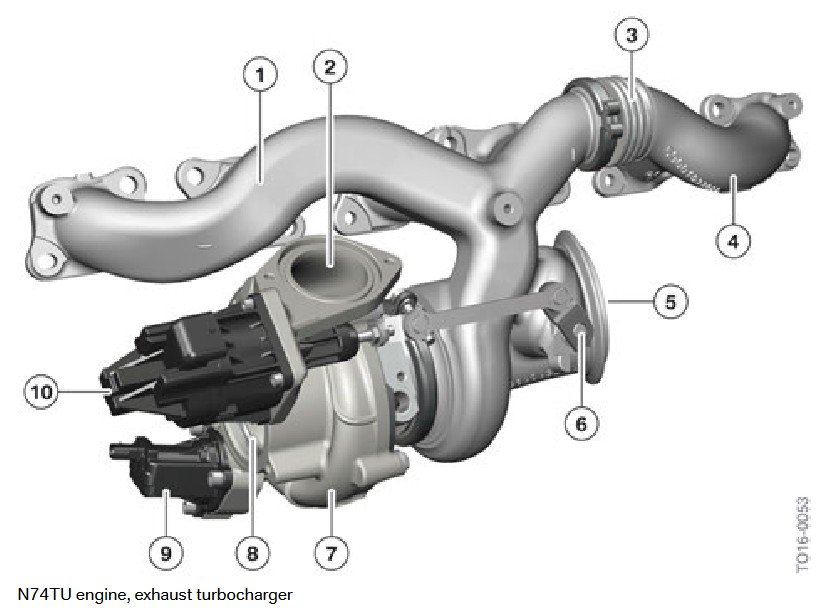techXXX
BMW N74 vs N74TU: Bavaria’s Modern Classic Biturbo V12 Engine
BMW’s N74 is the most technologically advanced V12 engine in a road car. BMW has kept it in production with exactly one technical update, the N74TU. Today, I briefly examine the changes made in the N74TU in five areas.

BMW’s N74 is the most technologically advanced V12 engine in a road car, even though it was introduced over a decade ago. Thanks to its more conservative design compared to the N54 and the N63, BMW is able to keep it in production with exactly one technical update, the N74TU, which arrived in 2016. Today, I briefly examine the changes made in the N74TU in five areas.

Crankshaft, Pistons, and Bearings
The most obvious difference with the N74TU was the increase of stroke from 80mm to 88.3mm to accommodate the increase in displacement. The engine remains oversquare.
On the N74TU, as necessitated by Start/Stop, the main bearings and the upper rod bearings are coated with IROX, which contains solid lubricants for frequent engine starts. Obviously, it is best to defeat this “feature” if one intends to prolong the service life of the engine.
At the same time, BMW doubled the number of oil drains on the pistons from 4 to 8 and added an additional oil groove around the oil scraper ring. This should reduce oil consumption.

Fuel System
With the fuel supply system, BMW “downgraded” the N74TU to conventional solenoid valve injectors, which is part of their new “high-pressure injection” HDE system that supplanted the old “high-precision injection” (HPI) system with piezoelectric injectors. The main difference is exactly as the name suggests: the old piezo injectors could use the “stratified strategy”, which is supposedly the main advantage of direct injection. However, because stratified fuel injection greatly increases NOx emissions, even the N74 hardly used it, and not at all in the USA. With the advent of Euro6 emission standards, almost all GDI engines now use exclusively the “homogenous strategy”.
Just as an aside, with the “homogenous strategy”, the engine operates on a homogenous air-fuel mixture, like it is with port injection. With the “stratified strategy”, a very lean burn is used for low-load operations to save fuel, with a small, richer area around the spark plug for ignition. The latter is why Volkswagen’s engines carry the name FSI, even though most of them never used fuel stratified injection, and none does so today.
Ironically, while GDI is marketed to be good for reducing CO2 emissions, it produces more particulates that are worse in climate-warming. It is also worse for health. Without the “stratified strategy”, GDI does not save fuel, either.

Turbocharger & Vacuum System
Another main update is the integration of the turbine housing of the turbochargers to the cast steel exhaust manifold. This marginally improves thermal efficiency but obviously makes replacing the turbocharger alone as a unit impossible.
On the turbocharger itself, BMW finally uses an electric wastegate in the N74TU, while the N74 still used a pneumatic wastegate valve. BMW also replaced the pneumatic exhaust flaps with electric exhaust flap actuators. Hence, the vacuum system on the N74TU is greatly simplified and drives only the brake booster.

Oiling System
The N74TU adds characteristic map control to the oiling system. For this to work, an oil pressure sensor has been added—yes, many German engines for years lacked an oil pressure sensor. The goal is to reduce oil pressure in order to save fuel (at the cost of the engine’s service life).
There is a second oil pressure control chamber, marked 4a in the illustration, that can help restore engine oil pressure in an emergency by bypassing the characteristic map control system. The oil pump is also updated to work with this setup.

Accessory Drive
As BMW shifted away from hydraulic power steering with the N74TU, the A/C compressor now occupies the location of the P/S pump. The same serpentine belt layout has been carried over. The engine is equipped with a second alternator in the location once occupied by the A/C compressor on the N74, driven by another belt.
Overall, since the N74 never had most of the most problematic design “features” of the N63, it never needed “updates” on them. The solenoid valve injectors and the electric wastegate do improve reliability. However, characteristic map control and Start/Stop should reduce the service life of the engine, and replacing the turbo alone is impossible. On balance, the N74TU is probably more reliable but less durable than the N74.
All illustrations credit BMW AG.



